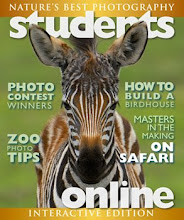
When I was at NANPA, I learned a lot about different tools that could be used to make macro photography a little easier. I thought y'all might want to here about these, so here's a list.
Flowerpod: A unique little device that functions like a free-standing plamp. It is a compass rule mounted on three legs that you can use to hold flowers steady. For more info, go here http://www.appalachianjourney.com/flowerpod/page42/page42.html
Glycerin: Glycerin is a common ingredient in soap, and is a very thick substance. It appears a lot like water, but due to it's thickness, it moves slower. It's slow movement allows you to use it in place of water in some shots were you may want to catch motion. You should only use glycerin for 1-5 drops in a photo. Don't cover the subject with it. If you want a lot of drops, get a small pocket mister with water. Also, after you are done, take a cloth and clean the glycerin off the subject. Small insects can get caught in it and die. The best method for placing the drops is an eye-dropper or medicine dropper.
The drop in the image shown is glycerin. As you can see, it looks exactly like water.
Wire Retriever: A wire retriever basically looks like a j with a dot at the hooked end. However, many versions can extend up to 4 ft. or more. This is helpful for moving elements in the photo just the way you want them while still looking through the viewfinder. Find one at your local home supply store.
All of these are amazingly useful tools, and can be really helpful, especially in garden photography.
Metadata: Canon EOS 50D with 100mm macro lens. ISO 800, f/2.8, 1/125th of a second. tripod, no flash. Drop is glycerin.



















